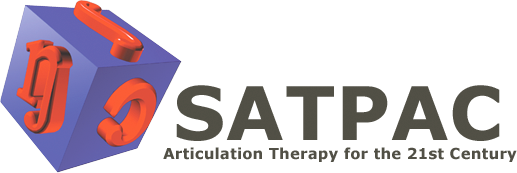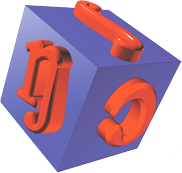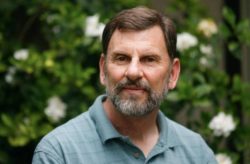Remediation for Phonological Disorders
December 6, 2011 6:08 pm
![]() for Speech-Language Pathologists & Audiologists
for Speech-Language Pathologists & Audiologists
March 17, 2008 – Vol. 18 – Issue 11 – Page 10
By Stephen Sacks, MA, CCC-SLP
It is not unusual to have students entering school with severe phonological disorders. I’ve had more than one kindergartener and first-grader who presented the following pattern of phonological processes: fronting, stopping, consonant cluster reduction, final consonant deletion, deaffrication, and gliding/vowelization for /r/. These students sound like they are speaking another language and are highly unintelligible.
The good news is that with effective remediation they can be easily understood in a short period of time. I primarily use a software program called SATPAC, which I developed. The program allows speech-language pathologists to develop lists of nonsense words targeting certain sounds or phonological processes. They also can delete from the lists any sounds that interfere with the target sound or are not in a student’s repertoire.
Consider the case of a student who presents with fronting (t/k, d/g); stopping (t/sh, s, d/z, b/v, p/f, t, d/th); consonant cluster reduction (p/pl, p/sp); final consonant deletion (kni/knife, da/that); deaffrication (t/ch, d/j); and gliding/vowelization for /r/ (wud/rug, dee-e/deer). I would develop two series of lists. The first involves remediating fronting and final consonant deletion using the nonsense word OKKOP; and the second involves remediating stopping, cluster reduction and final consonant deletion using the nonsense word EESNEEP.
The first step is to establish the target sound. For the /k/ I begin with the facilitating context of OK or OKKO, whichever is easier. The mouth is wide open, and the tongue is back, encouraging correct /k/ production. I then add the final /p/ to work on the final consonant deletion process. Systematic practice involves a series of nine lists, with each becoming progressively more difficult.
Next is a CVCV series of four lists. Interfering sounds can be added, and the student practices contrasting the /t,d,k,g/ sounds. Examples of this from list 4 might be TEEKO, KADI, GOOKA, DEEKEE and TAGO. Although the complexity approach would suggest that the /g/ should be the target instead of /k/,1 I’ve never had a student unable to quickly transfer to correct cognate usage. I choose /k/ as the target, as I find it is typically easier to say than /g/.
For the second series of lists, I establish EES, EESNEE and finally EESNEEP. I use facilitating contexts with the EE, encouraging correct /s/ production followed by the continuant /n/ and again followed by EE with all sounds in the lingua-alveolar position. As with OKKOP, I print out a series of nine lists, with each list progressively more difficult.
Examples of the first five words from list 1 are EESNEEP, EESNIB, EESNAEM, EESNET and EESNAD. The student simultaneously is practicing correct usage of the /s/ sound, using s-clusters, and using the final consonants that are in his repertoire.
Learning theory suggests that skills should be learned at the level that students can perform them quickly and accurately.2 I use a metronome and frequently begin at a rate of 100 beats per minute (BPM). As skill develops, we work up to a slow conversational rate of 140 BPM. The student must be at 80 percent accuracy at each level before moving to the next list.
I recommend using both series of lists together to work on all these phonological processes at the same time. Using this method systematically addresses the student’s phonological processes and leads to intelligibility quickly and efficiently.
References
1.McReynolds, L.V., Jetzke, E. (1986) Articulation generalization of voice-voiceless sounds in hearing-impaired children. Journal of Speech and Hearing Disorders, 51: 348-55.
2.Marzano, R.J., Pickering, D.J., Pollack, J.E. (2001) Classroom Instruction That Works. Alexandria, VA: ASCD.
Stephen Sacks works for Fresno Unified School District and is the co-owner of SATPAC Speech LLC in Fresno, CA. He can be contacted at [email protected].
Stephen Sacks has been a speech-language pathologist in the schools for 25 years. He can be contacted at [email protected].
Copyright å©2005 Merion Publications 2900 Horizon Drive, King of Prussia, PA 19406 ‰Û¢ 800-355-5627 Publishers of ADVANCE Newsmagazines www.advanceweb.com
This article was published by ![]() for Speech-Language Pathologists & Audiologists
for Speech-Language Pathologists & Audiologists
March 17, 2008 – Page 10



